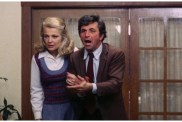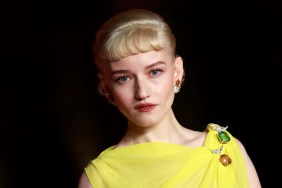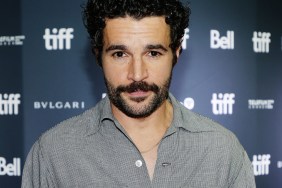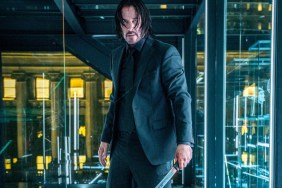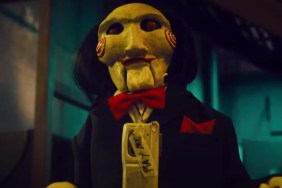
The latest in our spookiest contemporary horror series, Insidious: Chapter 3 is an aggressively creepy reminder that age and illness come for us all. It also differentiates itself as a sharp directorial debut from writer Leigh Whannell.
Mercifully, the Insidious films have not been so concerned with more of the same; maybe its that Blumhouse creative freedom we keep hearing so much about, or the genre artistry that emanates from both Whannell and his frequent collaborator James Wan. 2011s Insidious was a refreshing return from the pair who wrought Saw, crafting an eerie, shadowy spin on a Poltergeist-like tale. Its sequel, hitting just months after Wans The Conjuring, proved a gonzo B-side to that classical haunter hit. Wan & Whannell pushed further into a colorful, warped landscape whose high camp leanings made you smile, but ferocious fright smacked the smirk back.
Insidious: Chapter 3 brings it down to street level. Writer-director-actor Whannell presents an immediate, perhaps less ethereal side to the Insidious world, while also revealing which prevalent themes of films like Saw, Dead Silence and the Insidii truly belong to the filmmaker.
The Brenner family is still reeling from the loss of their matriarch due to cancer. Dad Sean (Dermot Mulroney) is the blue collar type, a widower doing his best to raise two kids and avoid the subject. Teen daughter Quinn (Stefanie Scott) has an actors dreams, which perhaps leaves her open to the idea that something, or someone, is making contact from beyond the grave.
Quinn seeks out series psychic Elise Rainier, whos in a much lower place than the first Insidious. The opening moments of Insidious: Chapter 3 see a depressed, reclusive Elise. Without her bright beam, its the only time star Lin Shayes ever seemed her age. Elise quickly finds a ghastly entity reaching out (often violently) for Quinn, and Whannell finds a perfect pair.
Weve seen Whannell play with age and illness before, combining the two in first outing Saw, as terminal cancer gave John Kramer a warped raison detre. Here, it similarly warps and shrouds. Elise is struggling, a woman who cant see past her own grief to help others and ready to lay down in her later years. An old woman in Quinns building also carries the close-to-death sight and superstition weve seen other of the writers elderly characters possess. Meanwhile, the apparition after Quinn is a hideous embodiment of disease, a charcoal hospital gown ghoul thats both a supernatural attacker, as well as a symbol of her mothers illness. Similar to Elise, Quinn cant see past the horror of her moms death to find her at peace.

This is exacerbated when Quinn is immobilized by a vicious car accident, a part of Whannells spin on the Insidious world. Whannell keeps the elegant design of the films, constructing scares with deliberate effect and simplicity. Elise and a trail of thick, mucky footsteps is among the movies eeriest moments, evoking the basic fright of something that shouldnt be. Later, a one shot double take out of a high rise window is a great shock. Here, the director and DP Brian Pearson also emphasize the veracity of handheld, playing the dreamy wonder of something supernatural and the harsh realities of the living against each other, or for misdirect in the case of the car strike.
When Elise agrees to help Quinn, young Stefanie Scott really gets to play. Just as Elise is almost overtaken by grief and age, Quinn is succumbing to despair from the loss of a parent and the greater use of her body. Quinn is quickly encased in two enormous leg casts, where the physical danger of her constrained state ups the tension of nearly every ghostly encounter (when a neck brace is added, its almost comical). Eventually, Scott also gets to go antagonist, becoming an agent of this horrible Man Who Cant Breathe. A later scene echoes the footprints scare, where impacting sound design and Scotts sheer force climb a wall in weird, disturbing manner.
This being an Insidious film, a trip to The Further is in order. The astral plane keeps in line with Chapter 3s tone however. Rather than full-on funhouse, the visions remain darkly personal, even establishing a tie to Insidious creepiest creation: the Bride in Black. This might seem gratuitous (thats saved for the final moment), but the outright creep factor of the Bride and its confrontation with Elise is just in line with both Chapter 3s threatening atmosphere and the series’ cheesier sensibilities reminders that deaths forms are always around and the goofy warmth necessary to navigate them.
